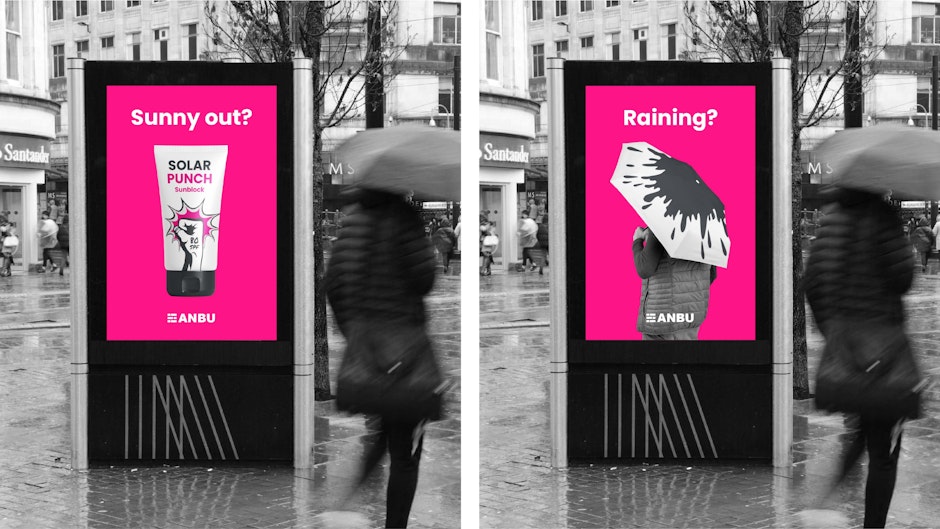Why treating DOOH campaigns like traditional billboards is a mistake for advertisers
By Will Brownsdon (managing director EMEA, Hivestack)

As brands prepare to tackle another year of competing for the attention of consumers, many are turning towards the power of digital out-of-home (DOOH) advertising to unleash new creative possibilities, maximize their budgets and drive real world outcomes.
Spending within the channel is set to exceed pre-pandemic levels globally by 2024 thanks, in no small way, to the emergence of programmatic DOOH. From jaw-dropping billboards that dominate landmarks like Piccadilly Circus in London to screens at bus stations, this flexible channel enables marketers to effectively reach consumers in a range of locations. It is no wonder that the DOOH market alone is set to be worth $58.67bn globally by 2031.
While the creative innovations in DOOH are clear for all to see, many are yet to embrace the transformative buying models afforded by programmatic DOOH and are opting to only buy static out-of-home (OOH) inventory the traditional way. So which buying method is the most effective way to spend marketing budgets to meet specific objectives and how do they differ?
Understanding traditional OOH buying
Traditionally, buying static and digital OOH inventory has been a complex, manual process. Person-to-person negotiations can often take weeks, if not months, and are completed via an insertion order. Marketers may also have to negotiate with multiple inventory owners if looking to execute a large-scale campaign. Slots are bought for set periods for set prices, and therefore, once an ad goes live, the budget and messaging are set.
This manual process can be labor-intensive, and when a campaign goes live, it can be difficult to adjust budget and parameters. Indeed, the long lead time and commitment to contracts ranging from four to eight weeks mean messaging is locked in well in advance. Though marketers can decide which inventory messaging is placed on, ultimately buying in OOH manually lacks the granular contextual control that marketers expect from modern advertising.
Moreover, while OOH and DOOH excel due to their one-to-many approach, there is little guarantee that a threshold of impressions from a brand’s targeted audience will be reached. DOOH bought manually is often displayed on a loop-based model, meaning creative is shown intermittently for set amounts of time. While this can lower the cost barrier for brands looking to buy DOOH space, it can lack precise targeting, contextual relevance and overall impact.
Despite some restraints, for marketers with ample lead time looking to activate campaigns that have longevity, the traditional buying method can be effective. The ability to handpick inventory and negotiate rates and flights ensures that creative runs exactly where and when a marketer desires, enabling brands to activate large-scale, set-piece activations that make a memorable impact on consumers.
Buying DOOH using programmatic technology
The rise of programmatic technology has revolutionized how DOOH is bought, activated and measured. Marketers looking to buy DOOH inventory will turn to demand side platforms (DSPs) to activate campaigns in a similar fashion to online programmatic advertising. Like its online counterpart, the programmatic buying method is automated with marketers able to adjust campaign parameters in order to ensure budget is spent effectively.
Buying DOOH inventory programmatically has several key advantages:
Precise targeting
Leveraging thoroughly vetted mobile location data, programmatic DOOH is at its core audience-centric. Brands can create custom audiences by layering multiple datasets, including demographic, socioeconomic, and behavioral factors. From here, audience movement patterns can be analyzed via anonymized device IDs, allowing marketers to see where high concentrations of their target audience are and deliver contextually relevant messaging to them programmatically. Geofencing can also be used to target inventory in predetermined locations where audience segments may be, for example within a 5km radius of a concert arena.
In-flight and contextual optimization
With long lead times and locked-in contracts, OOH and DOOH campaigns purchased via the traditional method are often at risk of messaging being left out of date due to societal or environmental shifts. At the same time, consumers are looking for greater personalization and targeting from advertisers. Programmatic DOOHs largest area of innovation can help to tackle both these issues.
Data is at the heart of programmatic DOOH. Demand Side Platforms (DSPs) collate data such as audience density and journeys while taking into account contextual factors such as the seasonal flu or a holiday shopping event, and even sporting or travel conditions. Leveraging data and key moments, campaigns can be altered in flight to redistribute spend to areas with denser concentrations of target audiences, or change messaging entirely to reflect external factors. For example, if Chelsea FC was to win the UEFA Champions League this year, brands could switch their messaging in real time to target audiences around the stadium or nearby high concentration areas with updated messaging, congratulating the winning team and engaging directly with football fans.
In-depth measurement
With marketers under ever increasing pressure to prove the effectiveness of campaigns, programmatic DOOH’s measurement capabilities are indispensable. Mobile location data allows marketers to assess the impact of campaigns, both in-flight and post-campaign. The impact of ads against KPIs such as brand awareness, lift, and consideration can all be measured. This data can also be used to better understand customer journeys. Footfall traffic and lift analysis can help better visualize where target audiences are and what drives them to the desired location.
Navigating the different methods to buy OOH campaigns is not always straightforward. In the current economic context, marketers are encouraged to weigh their options before making spending decisions. There are and always will be situations in which the traditional buying method is the right approach for marketers’ OOH campaigns. While the rise of programmatic DOOH gives marketers another way to purchase their campaigns that gives them flexibility, measurability and more precise targeting, it is not a one-size fits all channel. DOOH and indeed programmatic DOOH have a lot to learn from their traditional counterparts, and vice versa.

